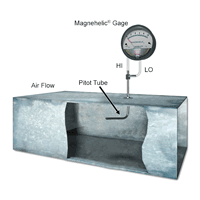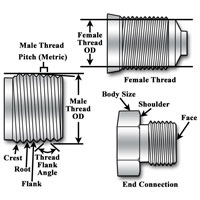Common Valves Used in the Oil & Gas Industry
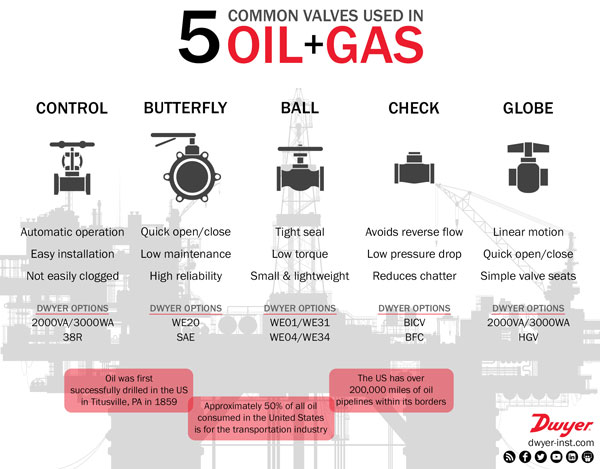
Valves are a vital part of any piping system, which means that they play a key role in the oil and gas industry. They can be used to control flow rates, to isolate and protect equipment, and guide and direct the refining process of crude oil. In this post, we will discuss five common valves that are used in the industry and what Dwyer Instruments, Inc. has to offer. Continue reading “Common Valves Used in the Oil & Gas Industry”
Air Velocity and Flow Measurement with Pitot Tubes
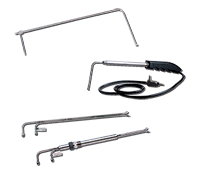
Dwyer offers many styles of Pitot tubes. Pitot tubes are commonly used sensors for monitoring air velocity and flow rate in heating, ventilation, and air conditioning. Some examples include the: Stainless Steel Pitot Tube Series 160, Telescoping Stainless Steel Pitot Tube Series 166T, and “S” Type Stainless Steel Pitot Tube Series 160S.

Pitot tubes are based on Bernoulli’s equation, which states that an increase in the speed of a fluid occurs simultaneously with an increase in dynamic pressure and a decrease in static pressure. Pitot tubes sense the dynamic pressure of the fluid flow at a particular point and were invented by French Engineer Henri Pitot in the early 18th century. Continue reading “Air Velocity and Flow Measurement with Pitot Tubes”
Custom Vanes for the V4 Vane Operated Flow Switch
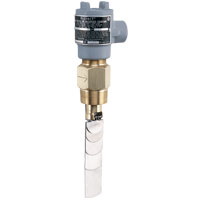
Vane or paddle flow switches are used to initiate high or low flow alarms. A common application is as a low flow alarm for shut-down of a system for protection of the components from damage. Often these are used in cooling lines, oil lines, or monitoring other fluid flows that are critical for the system to operate. Continue reading “Custom Vanes for the V4 Vane Operated Flow Switch”
U.S. and International Threaded Connection Standards
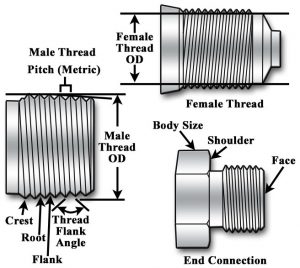
Threaded connections are often referred to as a process connection type. For Dwyer product specifications, this connection type is typically NPT (National Pipe Thread), which is an American standard thread. These connections allow products to be installed directly into piping or with the use of threaded fittings.
For threaded connections there are two common types, (1.) straight or parallel thread and (2.) tapered thread. Continue reading “U.S. and International Threaded Connection Standards”



